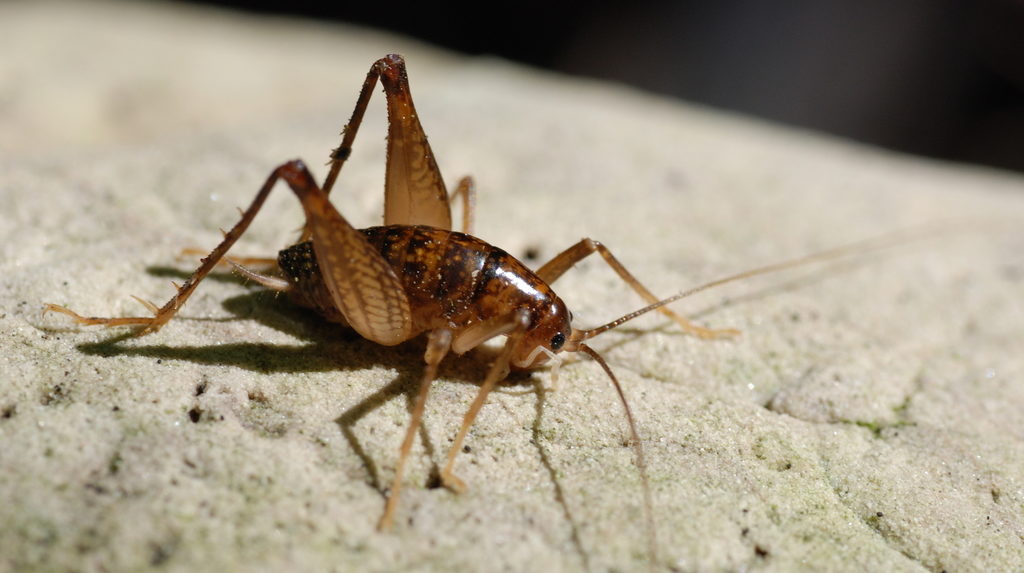
Short-legged Camel Cricket (Ceuthophilus brevipes) © Josh Vandermeulen (iNaturalist)
The Short-legged Camel Cricket is one of several species of camel cricket, so named because of their humped back. The information below applies to camel crickets in general.
Unlike most cricket species that we see, camel crickets do not “chirp”. They are nocturnal creatures, and are found all across the United States.
Outdoors, they are typically found in moist areas including under stones, logs, mulch, sheds, or woodpiles. Around buildings they are attracted to wells, drainage pipes, and the underside of air conditioner units.
Indoors, camel crickets are often found in damp basements, utility rooms, crawl spaces, garages and occasionally in attics. They often invade structures when it becomes hot and dry outside.
They are omnivores and will eat fungi, plant matter, insects, wood, cardboard, and fabric. Because they will eat fabrics and items in basements and garages they are generally considered household pests.
For comprehensive information about camel crickets (and why they are sometimes called “sprickets”), see this article from The Infinite Spider – a Science and Nature blog for Naturalists and Educators.
The Short-legged Camel Cricket is also called Boreal Camel Cricket
Conservation Status
Vermont:
Global: G5
Phenology
Camel crickets have a lifespan of about two years. They often overwinter as young nymphs or adults, as camel crickets have the ability to live without sufficient food sources. Females will lay their eggs in early spring, preferring dark, warm and humid areas. These eggs will then typically hatch during April. (PestWorld.org).
The very few observations recorded in iNaturalist show peaks in August and December.
More Information
Vermont Distribution
- Vermont Atlas of Life on iNaturalist – Not Recorded
All Records:






